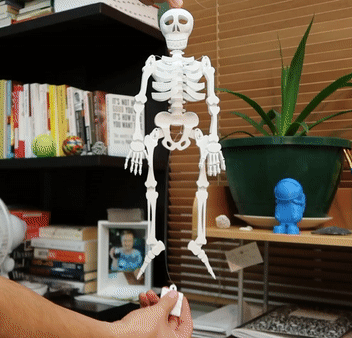
Geoff Shorts wrote in recently to share his experience of trying out TinkerCad. He had previously assumed it would be a pointless step-down from Fusion, but was pleasantly surprised by this project.
Recently I took part in a design challenge that forced you to design something in Tinkercad that was Halloween themed. Now, I’ve been a hardcore Autodesk Fusion360 user for a while now, so I never saw the point of designing something in Tinkercad, due to it’s limitations compared to Fusion360. So I was anxious to see what I’d be able to do with Tinkercad’s constraints. I was not disappointed.
I wanted to push the limits of what I thought Tinkercad was able to do. I knew that an organic model with smooth, flowing edges and intricate details was going to be the goal. That thought process, alongside the Halloween theme, led me modelling a skeleton.
One of the biggest challenges with this project was trying to figure out how to build what I wanted with the limited availability of shapes. When designing objects in advanced CAD software, I’m spoiled by the functionality provided. Tinkercad forces you to think creatively and come up with unique solutions to achieve your desired result. It drives your design in a certain direction and the final form is unknown to you until you figure out how to manipulate the available shapes to accomplish your goals. And that, in a way, takes more skill than it does to be an advanced CAD user.
The biggest lesson I learned from this project was not about troubleshooting and assembling a mechanism or adjusting print settings for better quality prints, it was much bigger than that. It was the realization that working with a restrictive medium (in this case, my modeling software) forces someone to really stretch their creativity. You have to think in ways that you normally wouldn’t. You have to come up with novel solutions to your problems. And that’s one of the more valuable lessons I’ve learned in my entire modeling and 3D printing career.
Moving forward, I’m excited about using this same restrictive theory with other projects. Restrict the use of your modeling software. Restrict the materials you’re able to use. Restrict the time allotted for design. Who knows what the result will be?
I was only able to upload one photo of the skeleton. I have additional pictures, .stl files, and videos available by request.
He shares the files and jumps into a bit more detail on the modeling process in this blog post on his site.
ADVERTISEMENT






